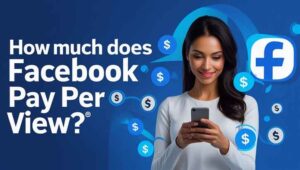You might be asking: Do dislikes matter on YouTube?
The short answer: Yes, but not always in the way you think.
YouTube is a giant playground.
Every view, like, comment, and yes, dislike tells a story.
But what do those dislikes really mean for your channel?
Let’s break it down.

Understanding YouTube Dislikes
YouTube dislikes are one type of viewer interaction.
They are not a death sentence for your video.
Instead, they are a part of the overall engagement.
Here’s what happens when you hit that button:
- Engagement Signal: Dislikes add to the total engagement a video receives.
- Feedback: They can hint that something didn’t quite hit the mark.
- Algorithm Data: They are used by the algorithm along with likes, comments, and view duration.
Think of it like this:
When you walk into a restaurant, you might not rave about every dish.
A few critical comments help the chef make your favorite dish even better.
How the Algorithm Uses Dislikes
YouTube’s algorithm is smart.
It doesn’t work in black and white.
It considers all engagement signals.
Key points to note:
- Like-to-Dislike Ratio:
The ratio tells YouTube what the general vibe is.
A high ratio shows the majority enjoyed the video.
But even when dislikes are in the mix, if viewers watch most of your video, it keeps performing. - Watch Time Matters:
Even if someone dislikes your video, they might still stick around.
And that long watch time is gold for the algorithm. - Overall Engagement:
Dislikes are just one piece of the puzzle.
Comments, shares, and especially watch time carry more weight.
In short:
A few dislikes don’t doom your video.
They help the algorithm understand what to show people.
The Impact on Channel Performance
Now, do dislikes matter on YouTube in a negative way?
Not necessarily.
Here’s why:
- Signal of Interaction:
Every click matters.
Dislikes are still clicks.
They show that people noticed your video, even if not all of them liked it. - Engagement Equals Exposure:
More interaction (yes, even negative) can mean more visibility.
Videos with active engagement often get recommended by YouTube. - Feedback for Improvement:
Dislikes can serve as early warning signs.
They let you know when something might not be working.
Remember:
High engagement, even with some negatives, is usually better than no engagement at all.
Your video’s performance depends on factors like watch time and viewer retention far more than just the dislike count.
Dislikes vs. Negative Comments
There is a difference between a dislike and a negative comment.
- Quick Feedback:
A dislike is fast.
It’s a tap and gone.
It doesn’t tell you why a viewer didn’t enjoy the content. - Detailed Criticism:
A negative comment may explain what went wrong.
It might say, “The video was too short” or “The point was unclear.”
That can be very helpful.
Consider this analogy:
Disliking is like frowning in passing.
Leaving a comment is like having a conversation.
The takeaway?
- Use both as cues for improvement.
- Don’t be dismayed by dislikes alone—look for patterns in comments and behavior.
Do Dislikes Affect Earnings?
A burning question for many creators:
Do dislikes matter on YouTube earnings?
The direct answer is: No, dislikes don’t directly cost you money.
Here’s why:
- Ad Revenue Focus:
YouTube pays based on ad clicks and watch time—not on how many dislikes you get. - Indirect Effects:
If dislikes lead to a lower engagement rate or shorter watch times, then fewer ads might be shown.
That could affect revenue slightly. - Sponsorship Considerations:
Brands often look at overall engagement.
If your video shows balanced engagement, a few dislikes won’t hurt your sponsorship chances.
Bottom line:
Dislikes alone won’t empty your bank account.
Focus on creating engaging content, and the views (and earnings) will follow. You can read the guide about does Rumble pay more than youtube?
How to Use Negative Feedback Constructively
Dislikes can sting.
It’s easy to take them personally.
But they can be valuable, too.
Here are some tips for turning dislikes into growth:
- Ask for Feedback:
Encourage your viewers to comment with suggestions.
Ask questions like, “What can I improve?”
This turns a simple dislike into actionable advice. - Analyze Engagement:
Look at your analytics.
Does your watch time drop at a particular moment?
Could that be when you lose viewers?
Use dislikes as signals to watch that part again. - Focus on Improvement:
Every creator gets criticism—even the big names.
Learn from it.
Adjust your content, your editing, or your presentation. - Stay Positive:
Remember why you started making videos.
Focus on viewers who engage positively.
Every dislike is a learning opportunity.
Think of negative feedback as a free lesson.
It may not always come with an explanation.
But it still tells you something important.
Frequently Asked Questions
Q: Does disliking a video on YouTube actually affect its ranking?
A: Dislikes contribute to engagement. They signal viewer sentiment, but factors like watch time and comments matter more.
Q: Can dislikes hurt my earnings on YouTube?
A: Not directly. Dislikes may affect overall engagement, which in turn can influence ad views, but they do not cost you money on their own.
Q: Should I ignore dislikes?
A: Not completely. Use them as data. Look at your analytics and consider feedback to improve your content.
Q: Do creators see who dislikes their videos?
A: No, YouTube only shows the total dislike count, keeping individual users anonymous.
Final Thoughts
In the end, do dislikes matter on YouTube?
Yes, they are part of the full picture.
They add to the engagement, help gauge viewer sentiment, and provide hints for improvement.
But they are not everything.
Focus on creating content that keeps your viewers watching.
Keep an eye on your analytics and respond to feedback constructively.
Every piece of engagement is a step toward growth.
Even if a few viewers hit that dislike button, your overall success depends on the holistic performance of your channel.
Keep your head high, learn from all feedback, and keep creating.
Your next hit video could be just around the corner.





